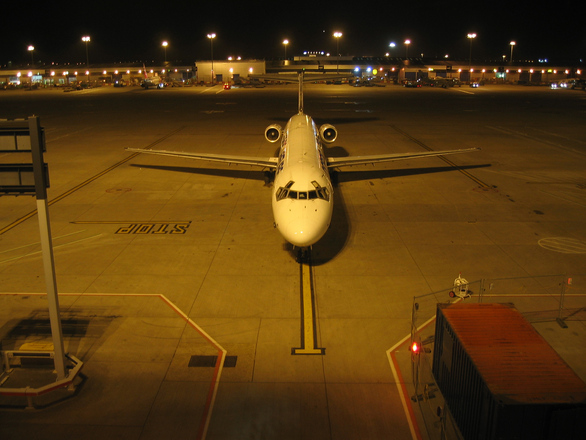How realistic is depreciation of an aircraft over a 20 or 25 year life when aligned to a % of original cost? This was a question asked at a recent joint breakfast seminar entitled "˜Emerging Accounting and Valuation Challenge"™ hosted by KPMG Dublin and independent aviation consultancy firm IBA.
Addressing a knowledgeable audience of airline, leasing, finance, tax, and legal executives at the event, Dr Stuart Hatcher, Chief Intelligence Officer at IBA, introduced a different perspective to the topic by looking at the economic life of the aircraft, as well as its residual values. He said "Aircraft economic lives have shifted over the last 35 years with the growth of leasing and competition and whilst aircraft produced in the initial phase of a program tend to more closely follow the 25:15 rule in a half-life condition, trading evidence would suggest that accounting for intangible end-of-lease compensation and associated cash reserves must be considered to get the same performance from the bulk of the fleet.
"However, the relationship between economic life, accounting depreciation and tax treatment is not an exact science "“ in fact, there is not necessarily any direct relationship when assessing the relationship of each aspect. Whilst taking simple views on monitoring half-life market performance worked once upon a time when there was less choice in the market," Dr Hatcher added, "this no longer works when assessing the depreciation policy of a brand new aircraft, as half-life value curves do not follow straight lines. Today, market forces, economic shocks, fuel pricing, technological developments and the value treatment of utilisation have all added pressure to the traditional concept. Whilst aircraft generally depreciate over a much shorter period, it is important that with the growth of leasing over the past 35 years that the utilisation value that has been paid for via a reserve or lease end compensation mechanism is part of the equation for a straight-line 25 year policy to remain possible "“ if there is to be a mark to market."
According to IBA"™s data resource "“ IBA.iQ – the "˜last-off-the-line"™ effect will play a part that for some will be relatively minor compared to the effects seen for the more classic aircraft "“ particularly under current fuel cost rules.
Dr Hatcher observed that "Widebodies in general have exhibited a weaker value performance beyond 18-20 years which tends to fit well with their production cycle. However going forward, we expect current generation narrowbodies will perform well when associated with maintenance cash, but will not stand up to long-term half-life performance. You cannot ignore the reserves or compensation.
"New designs are still the best hope to follow the traditional view as their value retention remains highest towards the early-mid part of their product life cycle, with last-off-the-line effects gathering pace as the latest designs build critical mass. In our view, no aircraft type can withstand more than two shocks once the replacement technology is gaining market share.
"With an appraisal hat on," Dr Hatcher said, "we can opine on what we see as the current market values and where the future residuals may be. However, the accounting and audit aspects do not necessarily align with what may actually be happening to the value of the metal. There can be wide gulfs between one airline and another when it comes to their specific depreciation policies. When you then add the Lessor"™ perspective, which may be more related to the lease term rather than the aircraft"™s long term utility, the variables and therefore the assessment are much more complex."
The Dublin aviation finance community present at the event acknowledged that depreciation across various aircraft types is increasingly being applied differently by airlines and lessors. In the recent news and amongst industry commentators the economic life of commercial jet aircraft is an issue of serious debate. Economic uncertainty and the introduction of new technology, are just two factors raised around aircraft economic life assumptions for commercial jets.
IBA"™s advisory services for fleet investment and strategy give credence to the data that suggests although some individual aircraft may suffer value impairment through early retirement, wider evidence gleaned through fleet operation and ownership will support current industry value retention assumptions.
Ian Nelson, Aircraft Leasing Partner in KPMG, noted the challenges of matching the commercial reality of aircraft usage and accounting convention for depreciation, in particular where these are designed to meet and where not.
Of particular interest to lessors in Ireland because of the country"™s taxation policy, the seminar – which was held for the second year running due to popular demand "“ concluded that although there is a range of allowable approaches to depreciation, ensuring the balance between simplicity and understanding of the depreciation policy by the users of the financial statements is critical. Just how long will the straight line to 20/25 years last?



